For Handel ~ Mark di Suvero
Mackenzie Dexter, Isaac Lowe-Anker, El Warren
-Background-
Mark di Suvero was born in China in 1933, and later immigrated to the US, where he received his education in philosophy at University of California, Berkeley. Mark di Suvero worked in construction, which introduced him to using building materials like steel. In the 1950s, Suvero began showing his sculptures to the world, carrying an unmistakable influence from the abstract expressionist era that arose after WWII, and becoming noteworthy for his use of steel (1). Suvero’s twenty-seven foot tall construction of solid red I-beams at the Performing Arts Center was originally created as an homage to the German-English baroque composer, George Frederic Handel (7). Suvero is known to have a knowledge of music, and he also visualized the close relationship between art and architecture in his work, both heavy influences on his industrial-style sculptures (5). His dedicatee, George Frederic Handel, composed in the age of baroque music, born in 1685 and living in the same period as other famous late-baroque composers like Antonio Vivaldi and Johann Sebastian Bach, he is recognizable for his heavily choral “oratios” (6).
Photo: Mackenzie Dexter
These baroque musicians were known for their soaring and melodious compositions, many pieces being revolutionary in their influence on what is now known as orchestrated “art music” (2). Suvero’s vivid red sculpture and conspicuous use of I-beams is a testament to this bold style, in a way embodying the high impact of baroque compositions (5). “For Handel” is also placed strategically at the PAC to allow the audience a serene view of Bellingham Bay and the mountains on a clear day, furthering the melodious nature of Suvero’s sculpture and its interactions with the surrounding environment. He is considered to be an “action sculptor,” being directly involved in forming his pieces, from operating his own cranes and trucks to welding (1,2). The nature of this sculpture on Western’s campus is that it is interactive, much in the way that Suvero created his sculpture as and involved “action artist,” his audience can experience his work by walking through it, touching it, or maybe using it as a bench to do homework.
Photo: Mackenzie Dexter
Mark di Suvero created “For Handel” in 1975, in the middle of a decade when land art, feminist art, and performance art were on the rise. Each new piece was a daring experiment, and many artists tested society to see how they reacted to the statements woven into their medium. Music, war, technology and political movements were all major contributions to artists’ work (3). Mark di Suvero’s “For Handel” was not influenced by politics, and was more of an homage than a statement, his work often did, however, mean to make important claims, for Suvero is known not only as an “action artist,” but as an activist (1). Suvero’s background as a union crane worker shows in his work, the beginning of his career as an artist was supported by construction jobs, and this influence shows in his pieces, even today he honors that background by using the same construction materials and labor intensive techniques. He has influenced almost all methods of outdoor sculpture that exist today (4).
His large steel sculptures in bright, bold colors were somewhat foreign to art audiences. Geometric art became popular during this decade. Everything from architecture, to fashion, to visual arts began to incorporate geometry. Structures such as the Sears Tower, John Hancock Center, and the World Trade Center emerged during this time. The architects responsible for these buildings drew from modernism, simplicity, and geometry to create these world renowned structures (8). His pieces are large and bold, but they only consist of a few components, the beauty in the design lies in the way his constructions seemingly defy gravity. The art and style of Mark di Suvero and others like him have impacted not only Western’s campus, but cities around the globe.
Photo: Mackenzie Dexter
When seeing Suvero’s work, one gets the same unsettling feeling you might have when peering down the towering majesty of the golden gate bridge. This seems fitting because his family immigrated to San Francisco in 1941, just four years after the bridge was completed and opened to the public. His sculptures can easily be described as the crossroads between sturdy and precarious, which in a way reflected the societal happenings of the period in which he produced the bulk of his work.
-Interactions-
~For this segment we approached students that were interacting with the sculpture in some way and asked them various questions about what the piece meant to them
Danielle
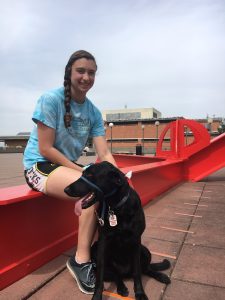
Q: How do you interpret “For Handel?” A: “It is very industrial and it grabs your attention.” Q: What do you know about “For Handel?” A: “I know nothing about the sculpture.” Q: How does the sculpture add to the WWU campus? A: “I think it makes the campus more colorful and it’s a good place for people to sit.” Q: Why do you choose to spend time around this sculpture? A: “I was just here by coincidence, but it has a nice view of the bay.” Q: How do you think the art around WWU impacts and contributes to our campus? A: “The sculptures give the campus more character and I think it adds to the natural environment along with the school environment.”
Clara
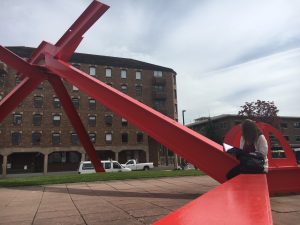
Q: How do you interpret “For Handel?” A: “It reminds me of construction work, very colorful construction work. It’s also Q: What do you know about “For Handel?” A: I know it’s has something to do with music, for Handel. I know it was influenced after a musician.” Q: How does the sculpture add to the WWU campus? A: “I feel like because it is so big and bright, it is one of the sculptures most people here know about and recognize. It is a statement piece.” Q: Why do you choose to spend time around this sculpture? A: “I really like the location of this sculpture because it has a nice view of the water.” Q: How do you think the art around WWU impacts and contributes to our campus? A: “Since a lot of them are very interactive, it allows students to look at it and appreciate it along with being a part of it.”
Aubrie

Q: How do you interpret “For Handel?” A: “It is a very geometric, bright, sculpture that contrasts the surrounding WWU buildings. The sculpture really enhances the landscape and structures around it. It is also very interactive, which is cool.” Q: What do you know about “For Handel?” A: “I know that it is part of the WWU sculpture collection. I know that “For Handel,” and many other sculptures around campus, are supposed to be interactive. That all I really know about it though.” Q: How does the sculpture add to the WWU campus? A: “It brings some variety to the types of architecture and design elements already present because it is such a different and unique style. It is also a very large sculpture, so it really catches the eye.” Q: Why do you choose to spend time around this sculpture? A: “ Mainly because it is by food, and the location of it is really good.” Q: How do you think the art around WWU impacts and contributes to our campus? A: “I think it enhances the campus overall. A lot of the art is very different and each piece is a very different style, size, idea, so it is nice to find different ways to interpret them. The sculptures give us something to think about besides our school work.”
Harrison
Q How do you personally interpret the sculpture?
A It looks like a big red cricket making a beautiful and glorious landing.
Q How do you interact with the sculpture?
A I sit on the bottom part, I’ve seen people climb on it before.
Q How does “For Handel” add to our campus? And how do you think our collection of sculptures contributes to Western in general?
A When I think of sculptures at Western, this is the main one I think of. Western is unique and its numerous sculpture help to define that.
Q Why do you choose to spend time around the sculpture?
A Because it’s a cool thing to observe while studying or hanging with the homies.
Helen
Q How do you personally interpret the sculpture?
A The color red represents passion. The three legs are each connected at the top and are dependent on the other legs to stay upright. I think that the sculpture represents how the bond between people makes them stronger and more resilient.
Q How do you interact with the sculpture?
A The sculpture is very physically interactive for climbing or using as a bench.
Q How does “For Handel” add to our campus? And how do you think our collection of sculptures contributes to Western in general?
A The sculptures on campus were designed to be interactive, which makes Western a unique campus to not only view and appreciate art but also to experience art. I think that having “For Handel” is a great contribution to North Campus.
Q Why do you choose to spend time around the sculpture?
A Because it is located next to a beautiful view of the bay and it is a really nice sculpture to climb and hang out on.
Haven
Q How do you personally interpret the sculpture?
A I don’t know, it’s just kind of built to look cool and sit there.
Q How do you interact with the sculpture?
A I usually just look at it, but I climbed it once.
Q How does “For Handel” add to our campus? And how do you think our collection of sculptures contributes to Western in general?
A I mean, it looks cool, honestly most of them just look cool and give you a place to sit!
Q Why do you choose to spend time around the sculpture?
A The view of the bay is pretty nice.
Maya
Q How do you personally interpret the sculpture?
A I feel like it’s just part of the Western landscape and I don’t always see it as art, sadly. I’m looking at it right now and I can’t wrap my mind around it and what the artist meant it to be.
Q How do you interact with the sculpture?
A Climb it.
Q How does “For Handel” add to our campus? And how do you think our collection of sculptures contributes to Western in general?
A I love how they have become a part of our lives at Western, like the stairs and the San Juans. And how they are used for study spots, hammocking in the wood triangles.
-References-
1 “About the Artist.” Mark Di Suvero. Mark Di Suvero/Spacetime C.C., n.d. Web. 25 Apr. 2017
2 Cudworth, Charles. “George Frideric Handel.” Encyclopædia Britannica. Encyclopædia Britannica, Inc., 26 Aug. 2015. Web. 25 Apr. 2017.
3 Editorial, Artsy, and Julie Baumgardner. “The Most Iconic Artists of the 1970s.” Artsy. N.p., 11 Aug. 2015. Web. 25 Apr. 2017.
4 “Mark Di Suvero Biography, Art, and Analysis of Works.” The Art Story. The Art Story Foundation, n.d. Web. 25 Apr. 2017.
5 “React. Research. Execute! Public Art Collection Project” For Handel – Mark di Suvero. N.p., 7 Nov. 2016. Web. 25 Apr. 2017.
6 Sherrane, Robert. “The Baroque Age – George Frideric Handel.” Music History 102. Ipl2, n.d. Web. 25 Apr. 2017.
7 “Western Gallery, Outdoor Sculpture.” Western Gallery. Western Washington University, n.d. Web. 25 Apr. 2017.
8 “1970s .” 1970s – The Art and Popular Culture Encyclopedia. N.p., 12 Aug. 2010. Web. 25 Apr. 2017.
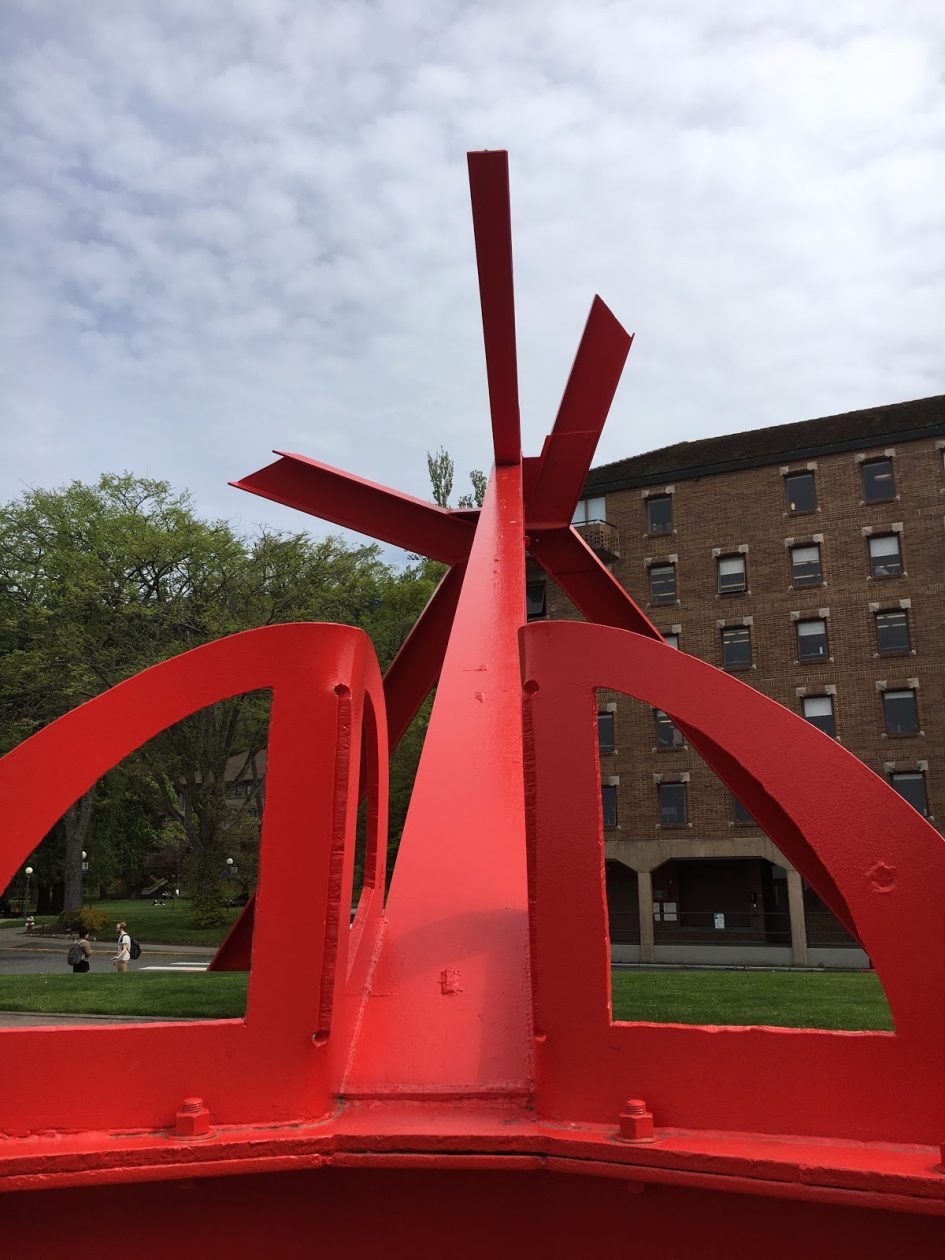
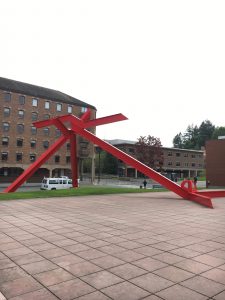
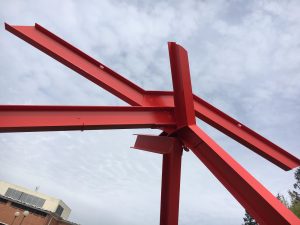

Leave a Reply